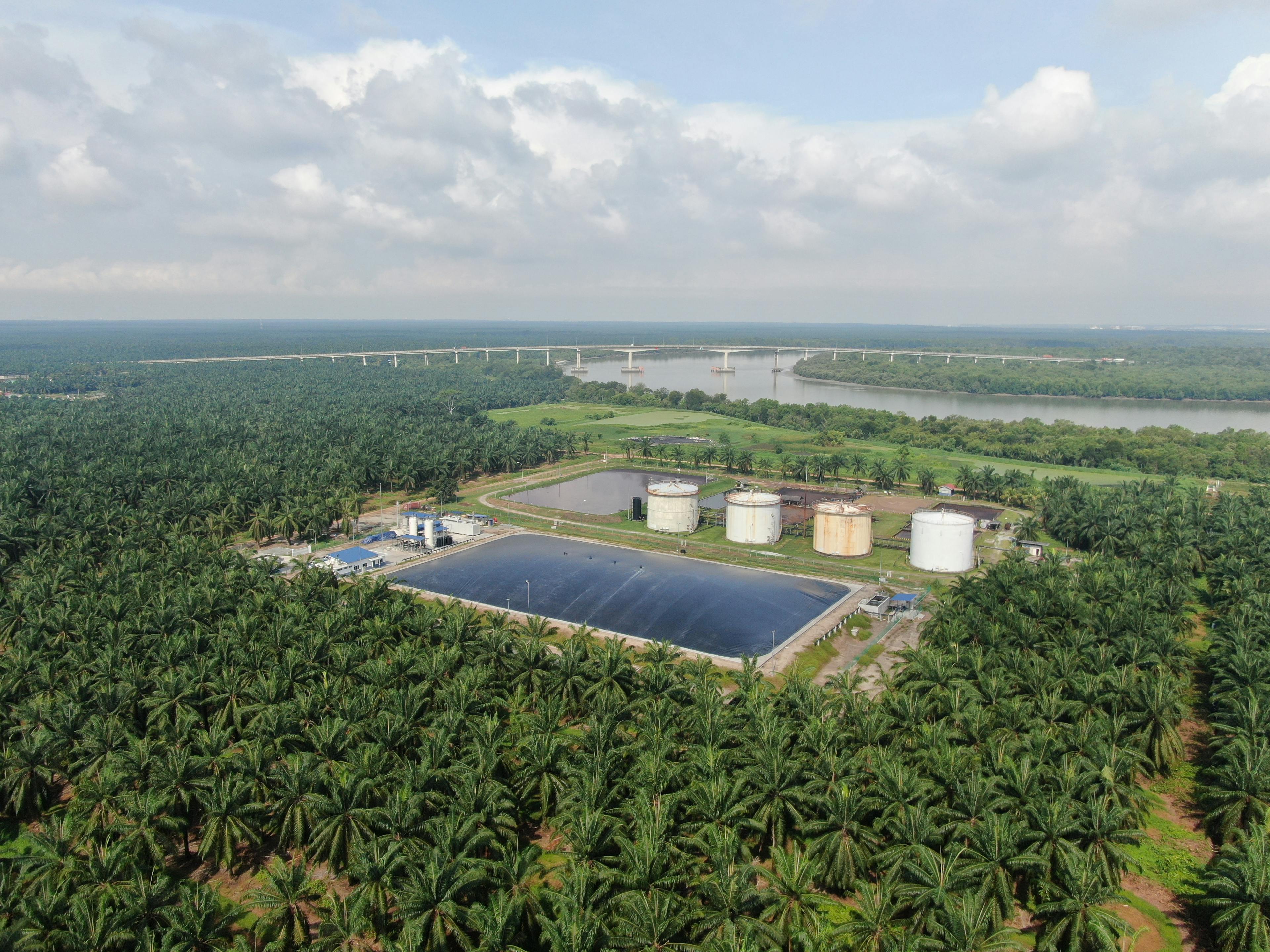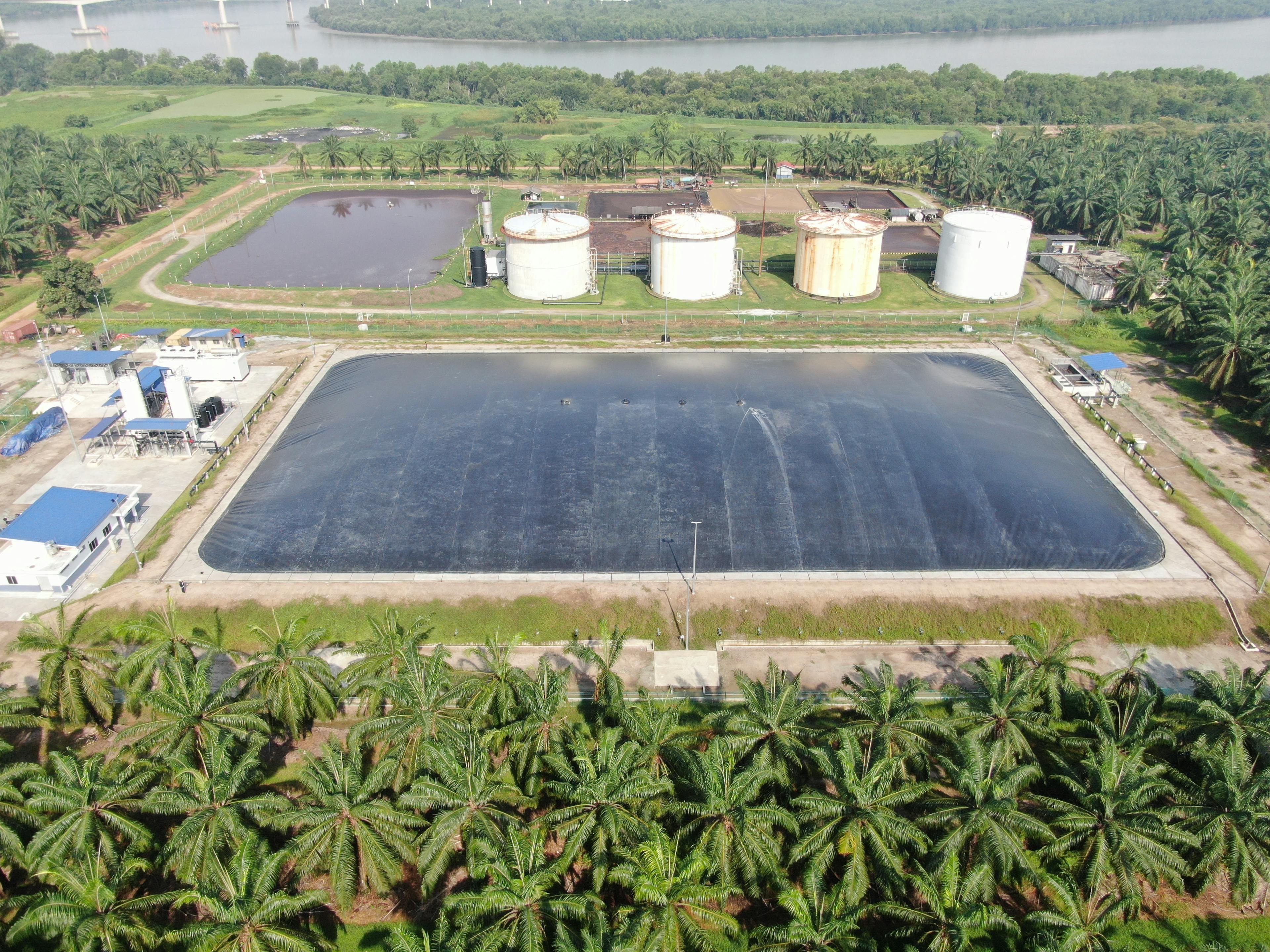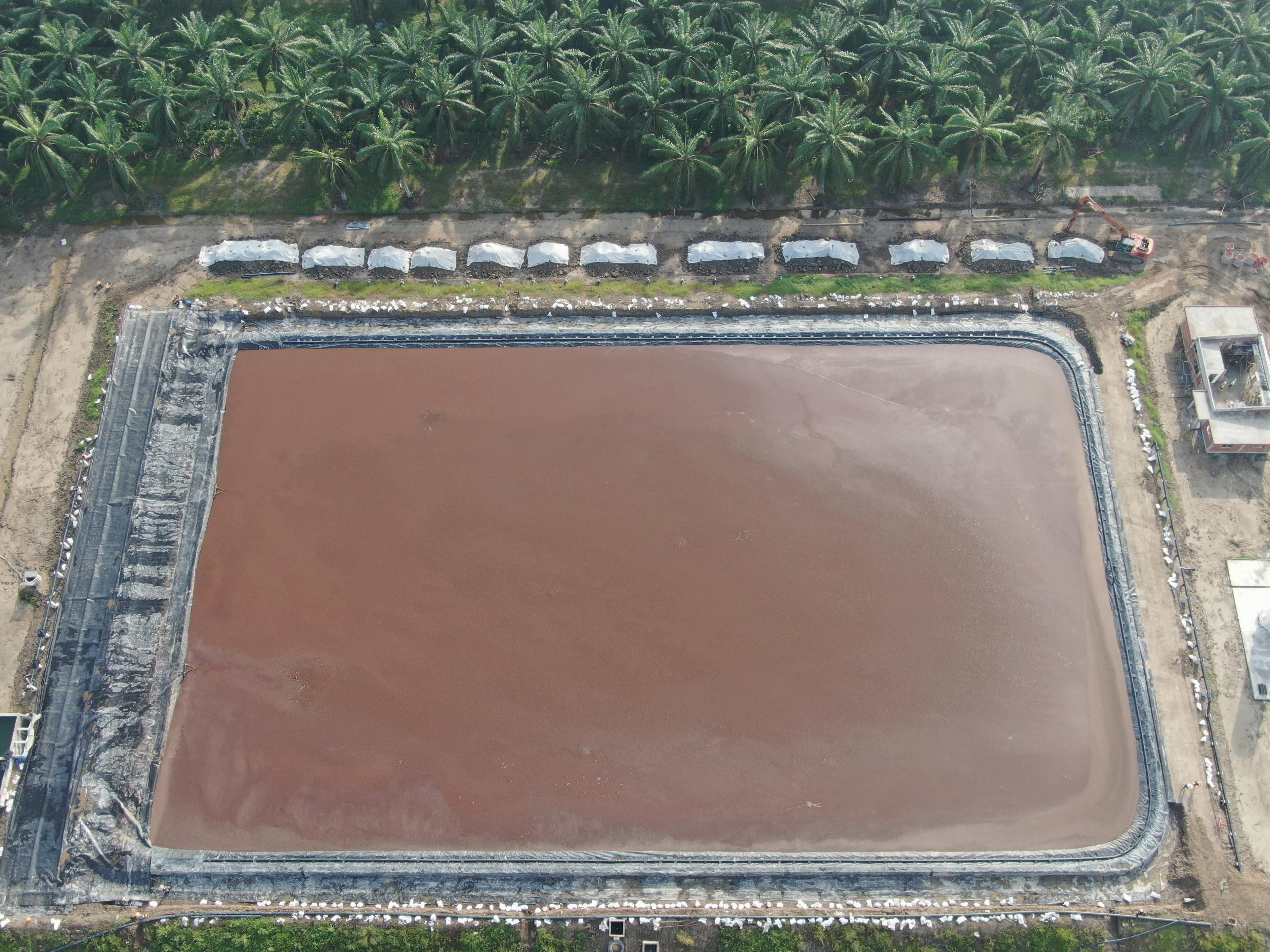
Biogas cover turns palm oil waste into fuel in Malaysia
Overview
Using agricultural waste for biogas is an important component of a circular economy. Sustainable biogas systems process waste, protect the environment, reduce methane emissions and convert a low-value waste product into a valuable raw material.
Cenergi develops, designs, finances, builds, owns and operates biogas projects that generate renewable energy from organic waste streams in Malaysia. They treat POME wastewater to produce biogas and use it as a fuel for power and/or steam generation, while reducing greenhouse gas (GHG) emissions and improving wastewater effluent quality. POME is an excellent substrate for renewable biogas production. Biogas forms naturally when POME decomposes, converting waste to energy.
The project involved the development, operation and maintenance of a biogas power plant derived from Palm Oil Mill Effluent (POME) via a Renewable Energy Power Purchase Agreement (REPPA) with TNB (Electric Utility Company in Peninsular Malaysia) for 21 years. The project was completed and started operating in August 2021.
Challenge
The project is unique because it uses an impermeable geomembrane barrier and floating cover system. An HDPE geomembrane provides the primary barrier at the pond base to protect the environment and underground water from pollution. A floating cover system – a geomembrane barrier designed to float on the surface of a contained liquid – enhances the anaerobic digestion activity by keeping air (oxygen) out.
Most importantly, it limits the release of methane produced by the wastewater ponds and allows the methane to be collected and used as an alternative fuel. This methane gas is collected from around the perimeter via a perforated piping system and then processed in either flaring or co-generation.
This POME Lagoon was lined with Solmax 1.0 mm HDPE geomembrane along the base and then covered with a 1.5 mm GSE HD geomembrane sheet for capturing the biogas – creating an anaerobic digester. The GSE HD liner series is an optimal choice for applications that demand excellent chemical and UV resistance and overall endurance properties at an affordable cost.
A GSE HD geomembrane was used for this project because it has significant advantages that make it a valuable engineering solution for environmental protection. The geomembrane has low permeability, low methane and water vapor transmission rates, excellent long-term exposed weathering performance and chemical resistance. Its outstanding mechanical performance also makes it an excellent candidate for wastewater barrier and biogas (methane) cover system.
Solution
Solmax provided an environmentally and economically sustainable solution through an HDPE geomembrane.
Solmax provided 9,290 m2 (100,000 ft2) of high-quality GSE HD Smooth geomembrane that exceeds the requirements of the GRI-GM13 specification standard to line and cover a POME wastewater pond. This creates an anaerobic digestor to capture methane gas and use it in energy generation for selling electricity back to the government by means of Fit-in-Tarif (FiTs).
The project benefits the client and the surrounding communities because there is no unpleasant methane odor. This means that no methane is escaping from the system into the atmosphere, thus contributing to reducing greenhouse gas (GHG) emissions.
This project promotes the use of biomass as a renewable energy source. It is part of initiatives to support the national energy supply mix and the Malaysian government’s strategy to intensify the development of RE by reducing dependence on rapidly depleting fossil fuels. Biogas helps to reduce GHG emissions and mitigate the impact of global warming effects. The Malaysian government has set a 20% target of renewable energy in the country's energy mix by 2025. TNB’s (Electric Utility Company in Peninsular Malaysia) efforts in promoting renewable energy, including for this project, is in response to the Government’s Five Fuel Diversification Policy. This biogas power plant will contribute about 1.6 MW of electricity to TNB’s distribution system annually for a period of 21 years.

Solmax provided high-quality GSE HD Smooth geomembrane

The project benefits the client and the surrounding communities because there is no unpleasant methane odor
Explore more case studies
View allMeeting subgrade stabilization challenges with MIRAFI
Utilizing MIRAFI RS380i geotextile fabric, this project overcame poor subgrade conditions to construct four commercial buildings with stable platforms for parking lots and loading docks.
IMAX parking lot's innovative stormwater system with MIRAFI
In 2012, Mississauga's IMAX parking lot implemented a low impact development system to manage stormwater, enhancing water quality and maintaining pavement integrity.
Meeting stringent CCR regulations with BENTOLINER
Xcel Energy successfully closed Sherco Pond No.1 and constructed Sherco Pond No.2 using BENTOLINER® to meet stringent CCR regulations, ensuring minimal environmental impact and continuous service.